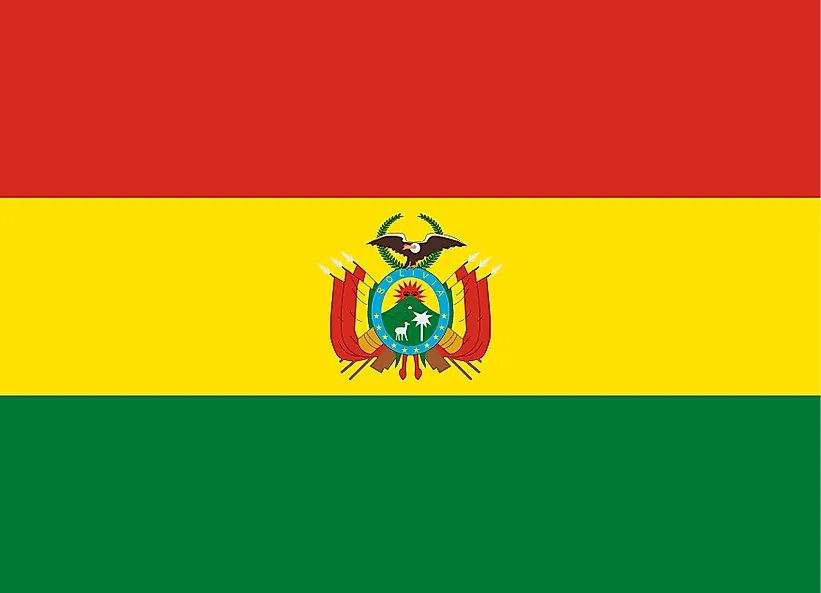
Bolivia
| Continent | Americas |
| Capital | La Paz |
| Population | 10,969,649 |
| GDP | $78.66 Billion |
| GDP per Capita | $7,200 |
| Dialing Code | +591 |
| ISO Code (2-letter) | BO |
| ISO Code (3-letter) | BOL |
Bolivia Landscapes






About Bolivia
Welcome to Bolivia, a country of remarkable geographical and cultural diversity in the heart of South America. Named after independence fighter Simón Bolívar, this nation of approximately 11.8 million people occupies 1,098,581 square kilometers, stretching from the peaks of the Andes to the Amazon Basin. Bolivia’s unique combination of high-altitude cities, ancient ruins, and pristine rainforests creates one of South America’s most fascinating destinations.
Geographic Features and Natural Beauty
Bolivia’s geography is extraordinarily diverse, encompassing three distinct ecological zones: the Andean highlands (Altiplano), the semi-tropical valleys (Yungas), and the tropical lowlands (Llanos). The country features some of the world’s most extreme landscapes, including the Salar de Uyuni, the world’s largest salt flat, covering over 10,000 square kilometers.
Lake Titicaca, shared with Peru, is the highest navigable lake in the world at 3,812 meters above sea level. The country’s western region is dominated by the Andes Mountains, with peaks reaching over 6,000 meters, including the majestic Nevado Sajama at 6,542 meters.
The eastern lowlands include part of the Amazon Basin, featuring vast rainforests, wetlands, and savannas. The Madidi National Park, one of the world’s most biodiverse protected areas, showcases this incredible natural variety.
Cultural Heritage and Traditions
Bolivian culture is a rich tapestry of indigenous traditions blended with Spanish colonial influences. The country’s indigenous heritage remains particularly strong, with 36 recognized ethnic groups maintaining their languages, customs, and traditional ways of life.
Traditional festivals, such as the Carnaval de Oruro (a UNESCO Intangible Cultural Heritage), demonstrate the vibrant fusion of indigenous and Catholic traditions. The country’s textile arts, particularly the intricate weaving traditions of the Aymara and Quechua peoples, are renowned worldwide.
Bolivian cuisine varies by region but commonly features staples like quinoa, potatoes (with over 200 varieties), and corn. Traditional dishes include salteñas (savory pastries) and charque (dried llama meat), while the coca leaf remains an important cultural element, particularly in highland communities.
Historical Journey
Bolivia’s history spans from ancient civilizations like the Tiwanaku, through the Inca Empire, to Spanish colonial rule. The Tiwanaku civilization, centered near Lake Titicaca, was one of the most important precursors to the Inca Empire, leaving behind impressive archaeological sites.
The country gained independence from Spain in 1825 but lost significant territory in subsequent conflicts with neighboring countries. Despite these challenges, Bolivia has maintained its unique cultural identity and rich traditions.
Modern Economic Landscape
Today’s Bolivia has an economy based on natural resource extraction, agriculture, and growing tourism. The country possesses significant mineral resources, including silver, lithium, and natural gas. The lithium reserves in the Salar de Uyuni represent the world’s largest known deposits, positioning Bolivia as a potential key player in the electric vehicle revolution.
Agriculture remains important, with the country being a major producer of quinoa, soybeans, and coffee. Tourism has grown significantly, attracted by the country’s natural wonders, cultural heritage, and adventure opportunities.
International Relations and Global Position
Bolivia maintains active participation in regional organizations and advocates for indigenous rights and environmental protection on the international stage. The country is a member of various international bodies and has been particularly vocal about climate change and its effects on developing nations.
Did You Know?
• La Paz is the world’s highest administrative capital city at 3,650 meters above sea level?
• The Salar de Uyuni becomes the world’s largest mirror during the rainy season?
• Bolivia was named after Simón Bolívar but is the only country named after a person that doesn’t contain any part of that person’s first name?
• The country has two capitals: La Paz (administrative) and Sucre (constitutional)?
Conclusion
Bolivia stands as a unique example of how ancient traditions and modern development can coexist in harmony. From its soaring Andean peaks to its Amazonian rainforests, from its indigenous cultures to its modern cities, Bolivia offers visitors an extraordinary glimpse into South America’s diverse heritage. As it faces the challenges of development and environmental preservation, Bolivia continues to chart its own path, balancing progress with cultural and environmental conservation.